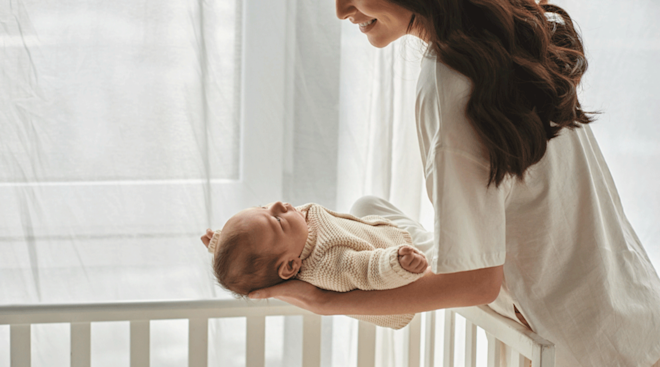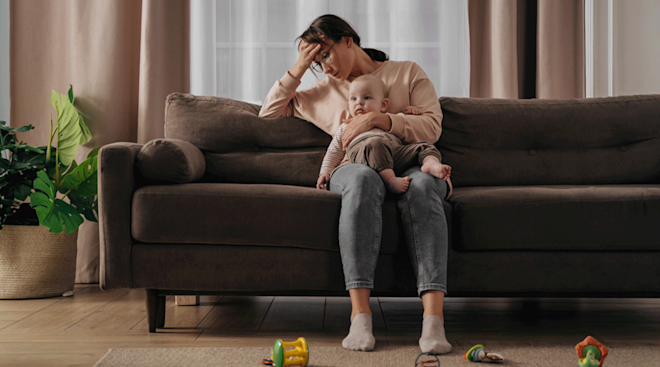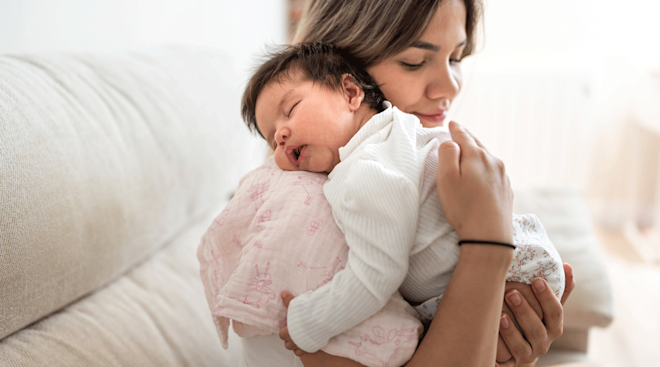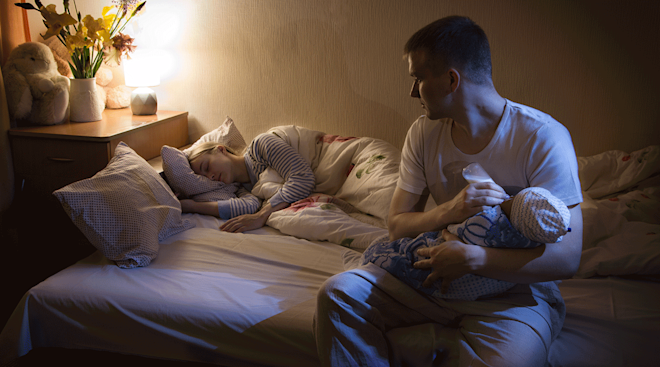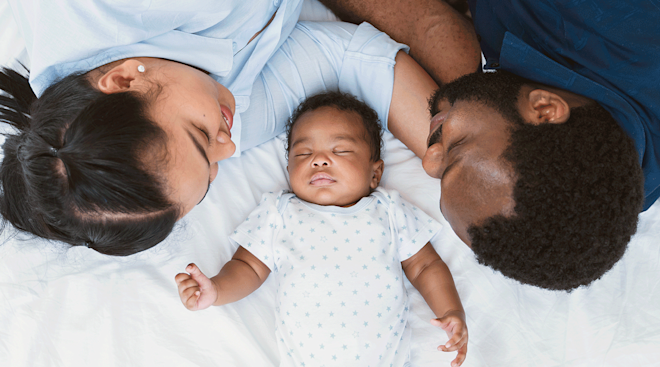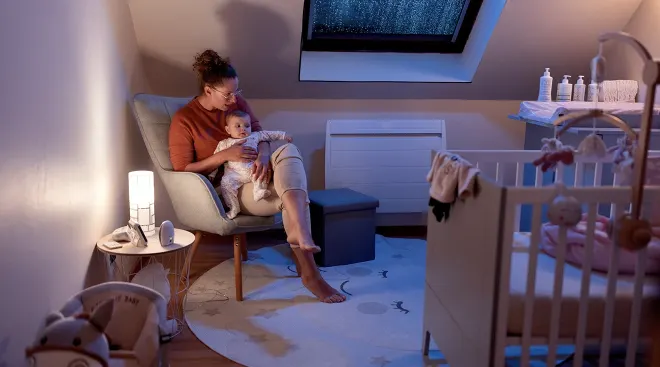Wake Windows: How to Time Baby’s Sleep Just Right
“When should my baby sleep?” is one of the most common questions new parents have as they try to figure out some type of nap and bedtime sleep schedule for their baby. Some parents opt to put their baby down for a nap whenever they appear tired, and others try to follow a more consistent by-the-clock schedule. But the reality is that with babies one year or younger, either of these scenarios could lead to an overtired or undertired baby, resulting in short or non-existent naps and refusal of bedtime. This is why following baby wake windows in the first year of life and beyond is so important. So what are wake windows exactly, and how can you tell what’s right for your child? Here’s the scoop on wake windows for babies and toddlers.
Wake windows are the periods of time that your baby is awake for in between sleep periods. We follow wake windows for two reasons: to ensure that babies are awake long enough in between naps to actually be tired when the next sleep period rolls around, and to put them down for sleep early enough to prevent them from becoming overtired.
Because babies’ awake time for the day, nap lengths and night sleep will slightly vary day to day and shift as they get older month over month, it’s far more realistic to follow wake windows than a by-the-clock schedule, especially in the first six months of life.
All babies and toddlers are unique and can differ in the amount of time they’re able to stay awake before needing another nap or going to sleep at night. That said, there are recommended ranges by age that will help you determine how frequently your child should be sleeping.
Newborn wake window: 60 to 90 minutes
4 to 6 month old wake window: 1.5 to 2.5 hours
7 to 9 month old wake window: 2 to 3.5 hours
10 to 12 month old wake window: 2.5 to 4 hours
13 to 15 month old wake window: 2.5 to 4.5 hours
16 to 18 month old wake window: 4.5 to 5.5 hours
18 month old+ wake window: 5 to 6 hours (follow a by-the-clock schedule while still keeping wake windows in mind)
How do I follow this chart?
When referencing these ranges, keep in mind that the shortest wake window is always going to be before the first nap and the longest wake window will be before bed. So for example, a 4-month-old should be going down for their first nap around 1.5 hours from when they woke up that morning and should go down for the night about 2 to 2.5 hours after they wake up from their last nap.
What’s important to keep in mind when following wake windows is that all babies are going to fall on different ends of the spectrum, which is why we provide a range. Some babies might be able to stay awake a bit longer, while others barely make it to the lower end of the recommended range. That means that in addition to knowing the recommended baby wake windows, you also have to pay close attention to your child’s sleepy cues.
Sleepy cues are signs or signals babies send that indicate they’re ready to sleep. While we don’t want to follow sleepy cues alone to determine when your child should sleep (after all, some babies will let out a yawn 30 minutes after they wake up from a nap, which doesn’t necessarily mean it’s time for them to go to sleep again), we do want to keep in mind both sleepy cues and wake windows when figuring out the optimal time for naps and bedtime.
Common sleepy cues for infants include: yawning, rubbing their ears or eyes, moving their head from side to side, suddenly having a glazed-over or dazed look, droopy eyes, fussing or crying, arching their back and refusing to eat. When baby starts displaying two to three of these signs, it likely means they need to go to sleep soon, and it would be a good idea to start the routine as long as it’s close to or within an appropriate wake window.
There are times when you will need to adjust wake windows based on how long your child naps. My rule of thumb is that if baby naps 40 to 45 minutes or less, shorten the next wake window by about 45 minutes (or in some cases up to an hour) to prevent baby from becoming overtired. If your little one were to only sleep 20 minutes, for example, following a full wake window (based on their age) would most certainly result in a cranky, overtired baby, which causes a cycle of short naps. To avoid this, whenever naps are short, we shorten the next wake window. This applies to the last nap of the day before bedtime as well, and even when baby has a rough night of sleep and seems overtired in the morning. Even though the first wake window before nap one is already very short, it may need to be shortened even more depending on your child’s behavior.
Baby wake windows can feel a bit confusing to navigate at first. Plus, babies’ sleeping patterns are constantly changing within the first year. There will be times that you miss that ideal window, and that’s okay. Give yourself some grace. Wake windows are not a perfect science. Just remember to stay consistent and give things time to stick.
Of course, wake windows are only part of the baby sleep equation. It’s possible that even after you follow baby wake windows consistently, your child still struggles to get good sleep. If you’re feeling defeated or overwhelmed, there are tons of resources out there, from sleep training articles and books to online classes and even one-on-one coaching.
Rachel Mitchell is a maternity and pediatric sleep specialist, founder of My Sweet Sleeper and mom of six. She has been working with families all over the world for nearly 10 years, helping them implement practical tips and approaches with their children to help them get better sleep. My Sweet Sleeper offers online classes, one-on-one sessions, e-guides and helpful content through social channels and blogs. If you need 1:1 assistance, please contact Mitchell here.
Please note: The Bump and the materials and information it contains are not intended to, and do not constitute, medical or other health advice or diagnosis and should not be used as such. You should always consult with a qualified physician or health professional about your specific circumstances.
Plus, more from The Bump:
Navigate forward to interact with the calendar and select a date. Press the question mark key to get the keyboard shortcuts for changing dates.

































